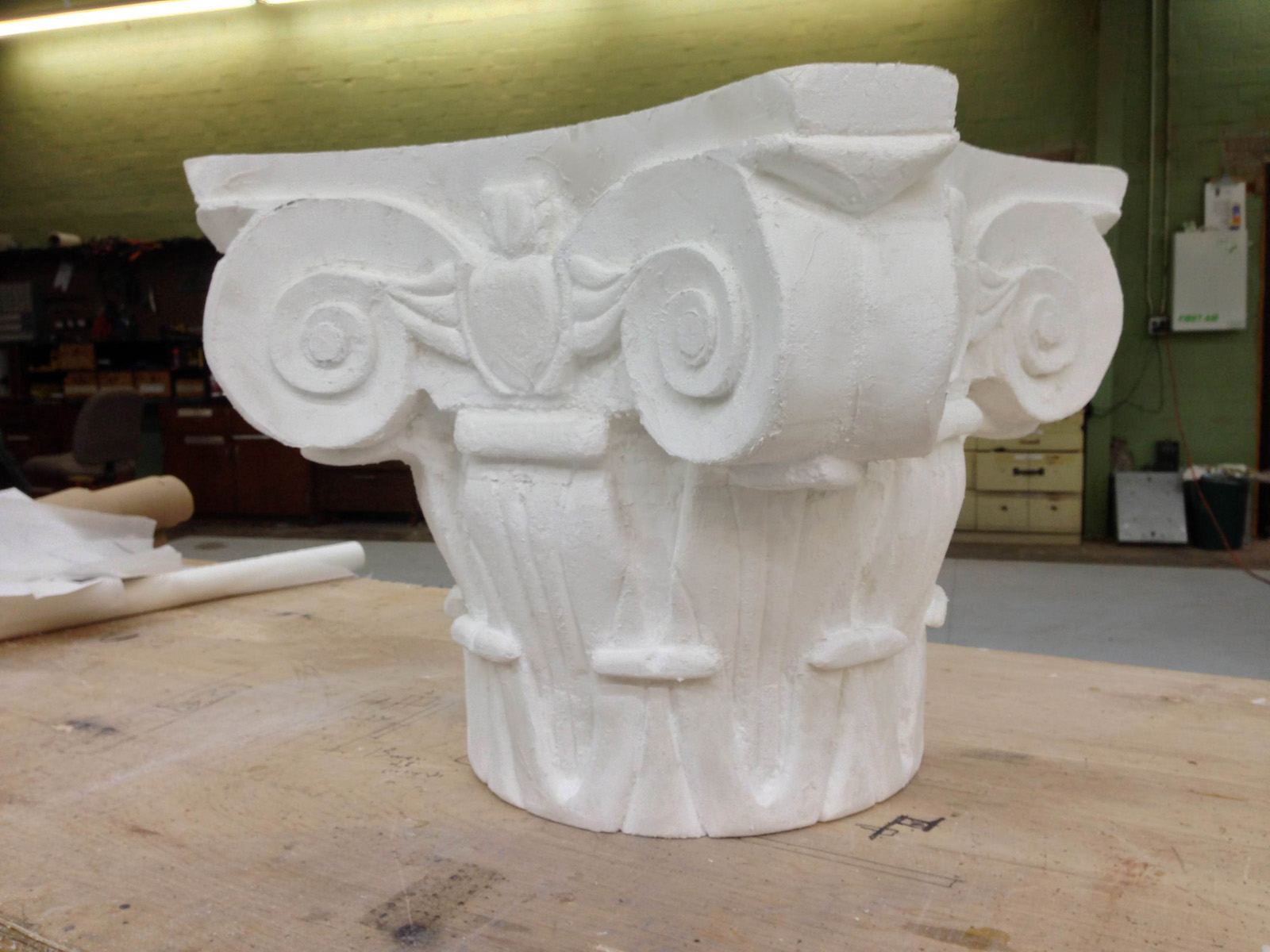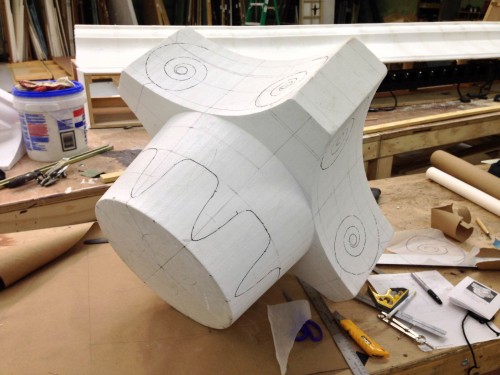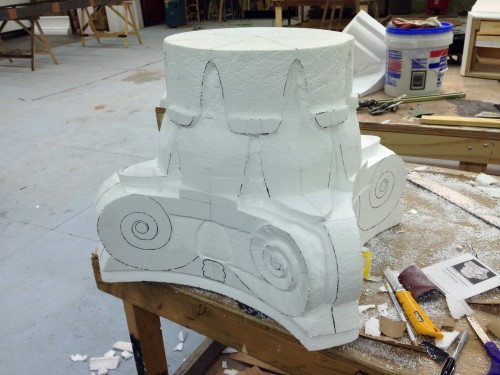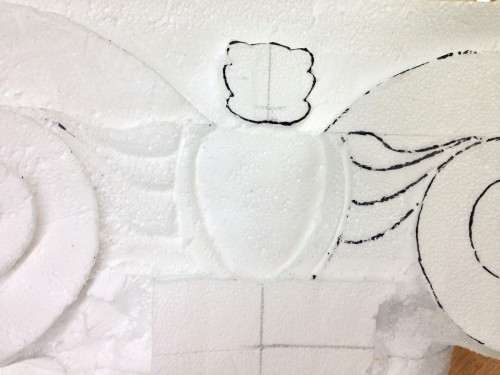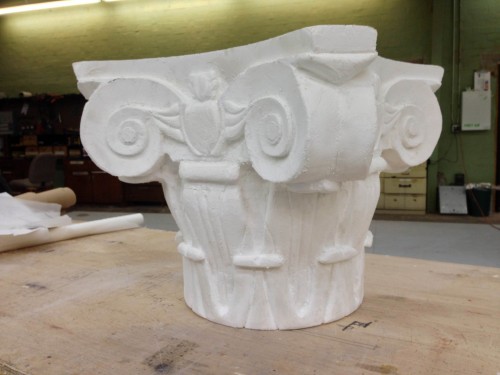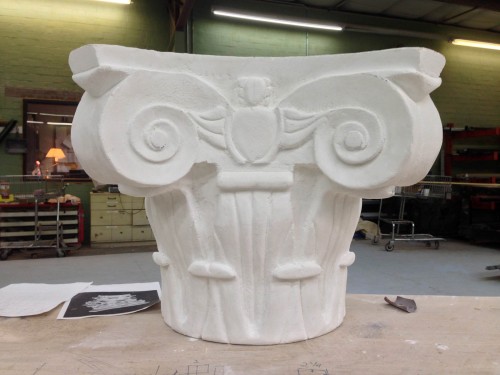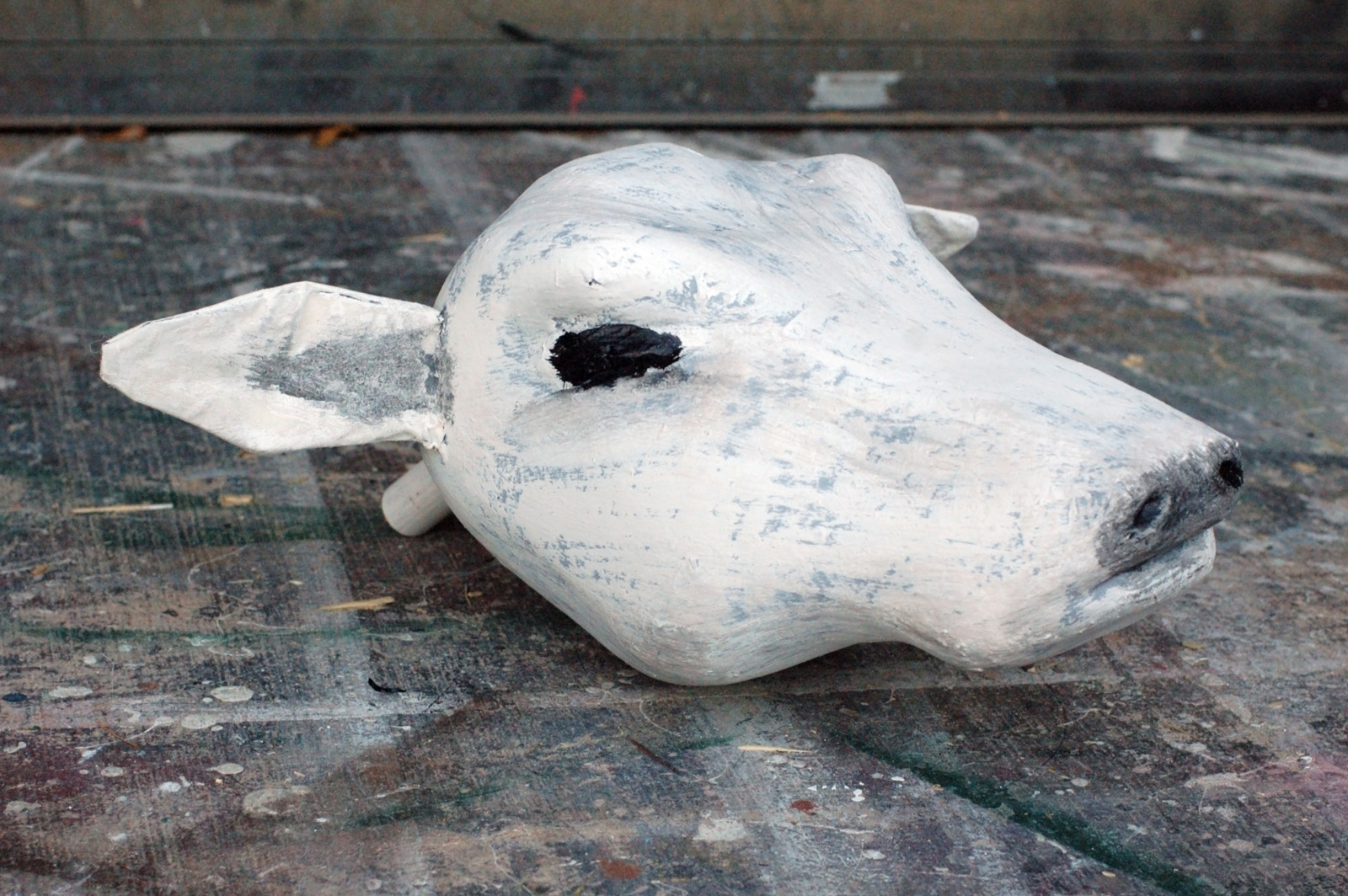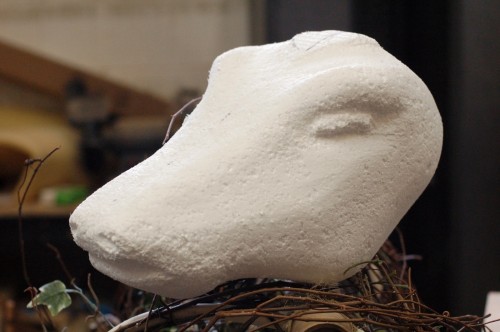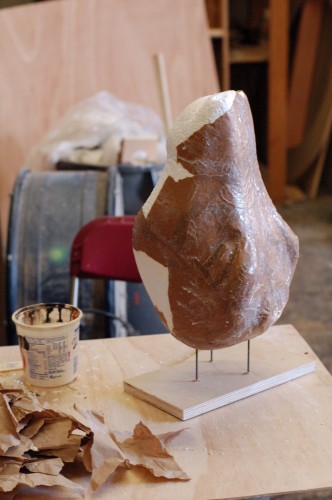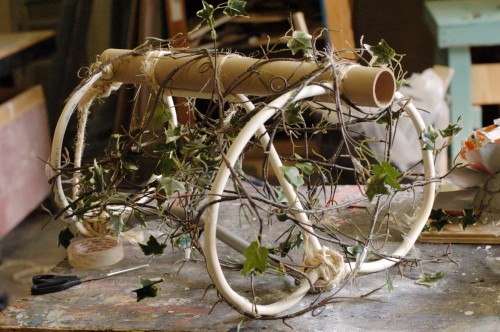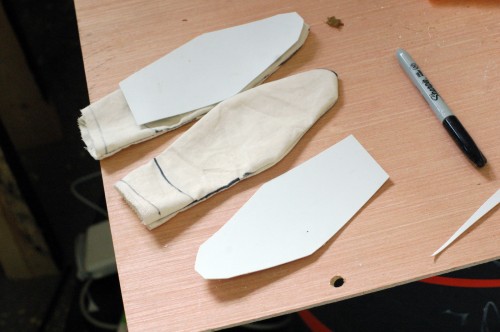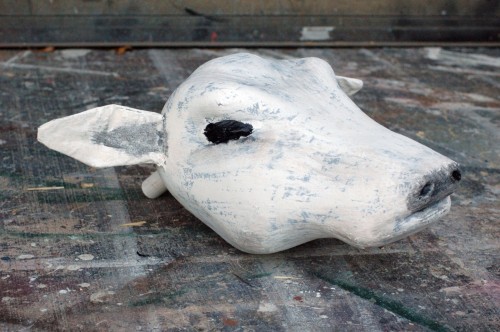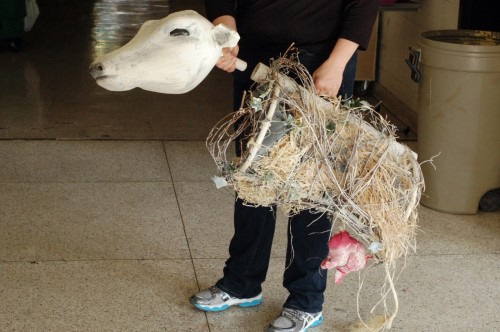I found a couple of recipes for a coating in some old props forums (circa 2002). They refer to the coating as “homemade Sculpt-or-Coat”, though it is very similar to recipes for scenic dope and monster mud. I have not tried any of these recipes, but I am posting them here for my own future reference and for yours.
This coating is useful for coating foam, to “paper mache” burlap, cheesecloth or muslin to wood and steel, or for use as a general texture. For texturing, you can mix in sawdust, sand, vermiculite, etc., for various results.
For a 5 gallon recipe:
- Fill 2/3 of a 5 gallon bucket with a 50/50 mix of acrylic caulk and joint compound.
- Add 1/2 to 3/4 gallon white latex paint.
- Add 1/2 gal. Rhoplex.
- Mix well with a drill and paddle mixer.
- Add about 1/3 gal. of white glue. Mix thoroughly.
You can tint it using latex or acrylic paint, or universal colorant. You can thin it with more white paint or Rhoplex. You have about 20-30 minutes of working time, and it dries fully in 12-24 hours. It should not go on thicker than 1/4″ or it will be prone to cracking. You can alter the recipe to suit your needs; adding more joint compound gives a harder and more rigid finish, while more acrylic caulk gives a more flexible finish.
Rhoplex is an acrylic binder made by Dow Chemical Company. It can be tricky to find, particularly in bulk. There are many other acrylic binders you can find at hardware and paint stores, though I am not sure whether these will also work. Other posters in the thread say they use PVA in lieu of Rhoplex (the PVA paint binder, not PVA glue or PVA mold release).
In another thread, Wulf points out that Rhoplex is pricey and hard to find, and that it may be easier and cheaper just to buy Sculpt-or-Coat for small batches. His own recipe involves PVA white glue, powdered clay and latex paint. Simply combine equal parts, stir very thoroughly and allow it to stand for about a day for the clay to absorb.

